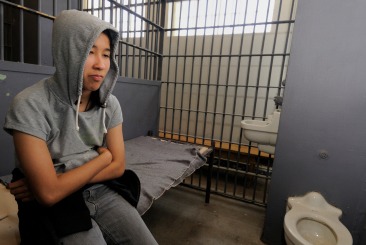|
| ||||||||||||||||||||||||||||||
| Challenges of managing minority populations, challenges minority practitioners face | ||||||||||||||||||||||||||||||
| By Terry Campbell, Professor, Purdue University Global | ||||||||||||||||||||||||||||||
| Published: 02/08/2021 | ||||||||||||||||||||||||||||||
 We have another very good topic to review for the month of February 2021. ‘Challenges of managing minority populations, challenges minority practitioners face.’ We have witnessed the various challenges facing offenders and staff in our prions, jails, and community with COVID and social distancing. This is still ongoing and has a direct effect on all offenders, regardless of gender and race.
We have another very good topic to review for the month of February 2021. ‘Challenges of managing minority populations, challenges minority practitioners face.’ We have witnessed the various challenges facing offenders and staff in our prions, jails, and community with COVID and social distancing. This is still ongoing and has a direct effect on all offenders, regardless of gender and race.
For the topic, I begin with some pertinent information from the Bureau of Prisons for staff; including information for gender and ethnicity. This is supplemented with some relevant data for inmates housed in the Bureau of Prisons and State Prisons. I included the resources for additional follow up. Bureau of Prisons (Gender and Ethnicity of Staff)
Number of correctional officers and other staff of local jails in the United States in 2018, by gender Correctional Officers Male-119,900 Females-54,600 Other 20,600 male 26,500 female https://www.bjs.gov/content/pub/pdf/csfcf05.pdf https://www.bjs.gov/content/pub/pdf/p19.pdf Staff “An estimated 445,000 employees were working in state and federal correctional facilities at yearend 2005 (table 4). Male employees outnumbered female employees by a ratio of 2 to 1. Among correctional officers and custody staff working in direct contact with inmates, men outnumbered women by a ratio of 3 to 1. The largest difference in staff by gender was among correctional officers in federal facilities. In federal facilities, 87% of correctional officers were men and 13% were women. The smallest difference—52% men and 48% women—was among the total workforce in private facilities. In state operated facilities, about 74% of correctional officers were men and 26% were women. About 66% of all employees were correctional officers, line staff, or supervisors who worked in direct contact with inmates and were involved in their daily custody or monitoring. Correctional officers accounted for more than 80% of all employees in Massachusetts, Rhode Island, and Delaware— states which operated combined jail/prison systems. Correctional officers accounted for less than 50% of employees in direct contact with inmates in the District of Columbia and the Federal Bureau of Prisons.” Table 4. Number of employees in correctional facilities under state or federal authority, by gender and occupational category: Gender (a) Male: 296,852 / 67% Female: 148,203 / 33% Occupational category (b) Administrators: 10,769 2% Correctional officers: 295,261 / 66% Clerical/maintenance: 51,993 / 12% Educational: 11,526 / 3% Professional/technical: 46,016 / 10% Other/not available: 29,489 / 7% (a) For federal, state, and regional data, see appendix table 12. (b) For federal, state, and regional data, see appendix table 13.
Several additional areas of concerns are lack of resources and what this represents, along with decreases in the number of males being incarcerated, some increases in the number of females being incarcerated, and other areas. This includes an understanding of special management offenders. Again, a working definition for special management will vary state to state. Some additional areas under special management are protective custody; administrative housing; the ethnicity of offenders; medical and mental health offenders; aging prison population; and other. This includes meeting specific programming needs. I feel we need to include visitation concerns. Previously mentioned, COVID and social distancing must be considered. In addition, many of our prisons are located in rural areas and/or creates transportation concerns. Inmates maintaining contact with their families are a major concern. We must recognize the racial composition of our offender populations and staff. All staff must be held accountable for their actions and not base decisions solely on the race of another person. This reinforces why training, supervision, professionalism, and accountability and responsibility are a must. Unfortunately, trying to maintain safety and security has created many challenges faced not only by the inmates, but corrections staff as well. There are many additional areas to consider in managing minority offenders. Even though 2020 has been a trying year in many ways, we overcame and are already making adjustments for 2021. Stay safe out there and maintain your integrity in a difficult field, yet one rewarding in many ways. Terry Terry Campbell is a criminal justice professor at Purdue University Global and has more than 20 years of experience in corrections and policing. He has served in various roles, including prison warden and parole administrator, for the Arkansas Department of Corrections. Terry may be reached at tcampbell@purdueglobal.edu. Other articles by Campbell |
MARKETPLACE search vendors | advanced search

IN CASE YOU MISSED IT
|


Comments:
No comments have been posted for this article.
Login to let us know what you think